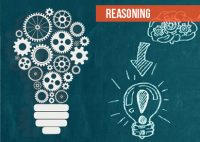Mathematical Operation For SBI PO Set – 18

Mathematical Operation For SBI PO Set – 18
1) If the following numbers are rewritten by interchanging the digits in ten;s place and hundred’s place and then arranging them in the descending order. What will be the second digit of the newly formed fifth number from your right?
479, 736, 895, 978, 389, 675
a) 3
b) 4
c) 5
d) 6
e) None of these
2) In each of the following questions choose the set of numbers from the four alternatives sets that is similar to the given set.
Given set : (4, 9, 18)
a) (8, 14, 22)
b) (10, 15, 25)
c) (6, 12, 23)
d) (12, 17, 26)
e) None of these
3) In each of the following questions choose the set of numbers from the four alternatives sets that is similar to the given set.
given set : (10, 14, 17)
a) (4, 11, 14)
b) (9, 12, 15)
c) (8, 13, 18)
d) (6, 9, 12)
e) None of these
4) In each of the following questions choose the set of numbers from the four alternatives sets that is similar to the given set.
Given set: (7, 27, 55)
a) (21, 35, 52)
b) (18, 42, 65)
c) (16, 40, 72)
d) (13, 30, 58)
e) None of these
5) In each of the following questions choose the set of numbers from the four alternatives sets that is similar to the given set.
Given set: (246, 257, 358)
a) (233, 343, 345)
b) (273, 365, 367)
c) (143, 226, 237)
d) (145, 235, 325)
e) None of these
6) In each of the following questions choose the set of numbers from the four alternatives sets that is similar to the given set.
Given set : (39, 28, 19)
a) (84, 67, 52)
b) (52, 25, 17)
c) (70, 49, 36)
d) (65, 45, 21)
e) None of these
7) In these questions, relationship between different elements is shown in the statements. The statements are followed by two conclusions.
Statements:
N < O ≥ R > T; R < A; B ≤ T
Conclusions:
I. N < A
II. B < A
a) if only Conclusion I true.
b) if only Conclusion II is true.
c) if either Conclusion I or II is true.
d) if neither Conclusion I nor II is true..
e) if both Conclusions I and II are true.
8) In these questions, relationship between different elements is shown in the statements. The statements are followed by two conclusions.
Statements:
C ≥ D = E ≤ F; Y< D ≥ W
Conclusions:
I.C ≥ Y
II.F ≥ Y
a) if only Conclusion I true.
b) if only Conclusion II is true.
c) if either Conclusion I or II is true.
d) if neither Conclusion I nor II is true..
e) if both Conclusions I and II are true.
9) In these questions, relationship between different elements is shown in the statements. The statements are followed by two conclusions.
Statements:
S ≤ T < U ≥ W; T ≤ R: G > U
Conclusions:
I. S < G
II. W ≤ R
a) if only Conclusion I true.
b) if only Conclusion II is true.
c) if either Conclusion I or II is true.
d) if neither Conclusion I nor II is true..
e) if both Conclusions I and II are true.
10) In these questions, relationship between different elements is shown in the statements. The statements are followed by two conclusions.
Statements:
S ≤ T < U ≥ W; T ≤ R: G > U
Conclusions:
I. R ≥ S
II. W < G
a) if only Conclusion I true.
b) if only Conclusion II is true.
c) if either Conclusion I or II is true.
d) if neither Conclusion I nor II is true..
e) if both Conclusions I and II are true.


